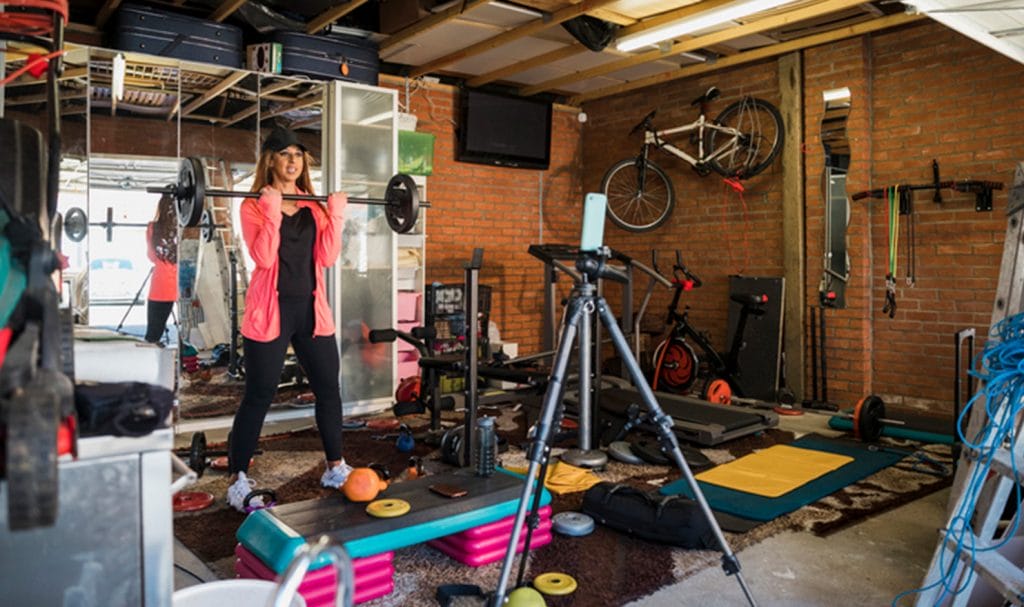- Last Updated:
- 6/19/2024
- Tricia Johnson

JoAnne Hammer | Program Manager
JoAnne Hammer is the Program Manager for Insurance Canopy. She has held the prestigious Certified Insurance Counselor (CIC) designation since July 2004.
JoAnne understands that starting and operating a business takes a tremendous amount of time, dedication, and financial resources. She believes that insurance is the single best way to protect your investment, business, and personal assets.
JoAnne Hammer is the Program Manager for Insurance Canopy. She has held the prestigious Certified Insurance Counselor (CIC) designation since July 2004.
JoAnne understands that starting and operating a business takes a tremendous amount of time, dedication, and financial resources. She believes that insurance is the single best way to protect your investment, business, and personal assets.
Personal trainers need insurance to help pay for accidents and injuries — like strains, sprains, and falls — as well as the potential claims or lawsuits that could follow.
Learn the whats and whys of personal trainer insurance to better understand your risks and needs, and be confident in your coverage.
Why Do Personal Trainers Need Insurance?
Personal trainers need insurance to protect against costly injuries, property damage, and other claims that could sideline their business. Think of claims as billable accidents and mistakes.
From a pulled hamstring to broken equipment, mishaps that happen in a second can follow you for years in the form of claims, lawsuits, and payments. Personal trainer insurance is a safety net designed to cover your specific risks in training and plan for possible claims.
You do health assessments with your clients all the time to identify potential risks on the way to their fitness goals — why not do the same for your business? Let’s power through some of the major risks and rewards that explain why personal trainers need insurance.

To Meet a Gym Requirement
The typical reason personal trainers get insurance is because their gym, studio, or health club requires it. Most gyms ask employees or trainers who rent their space to show proof of insurance, also known as a certificate of insurance or COI. Have you ever wondered why?
If a training client gets hurt during their gym session, or even if someone finds fault with your training advice online while you’re representing the gym where you work, they could name the gym in a lawsuit.
Insurance boosts a gym’s confidence that you’re prepared to handle the costs of a lawsuit if the worst happens. As a result, being insured opens up opportunities to train in more places.
Am I Covered Through My Gym?
Most gym insurance policies only cover the gym itself — not its trainers. Others only cover trainers who are full-time employees, not freelancers or independent contractors. Double-check insurance requirements and read the fine print in your contracts to make sure.
To Protect Against Expensive Claims
If your gym doesn’t require insurance, do you still need it? Skipping insurance is a pricey gamble. Expensive claims against personal trainers like negligence, bodily injury, property damage, or even advertising mistakes can be devastating for a small business.
Since 2020, Insurance Canopy’s average payout for defending a personal trainer liability claim is $31,218. Our highest claim since 2020? $217,814. Court fees, representation costs, and settlement payments add up fast, so insurance is not the place to cut corners in your budget.
To give you an idea of what insurance can help you avoid, here are some national average costs for lawsuits faced by personal trainers:
- Slip and fall settlements: $10,000–$50,000
- Equipment-related injuries and property damage: $25,000–$30,000
- Personal injury lawsuits: $31,000
- Copyright infringement lawsuits: up to $150,000

To Replace Broken or Stolen Gear
Wear and tear on your gear is a natural part of training and an expense you can plan for. But what if your work phone gets stepped on during a group session? Or all your recording equipment is taken from your home gym during a break-in? That’s usually not in the budget.
Insurance can pay for replacements or repairs, so you can save your hard-earned money.
To Show You're Responsible
Getting business as a trainer is all about showing clients that you’re trustworthy and professional. Insurance is a strong signal to clients that you take your job (and their safety) seriously.
To Deliver Peace of Mind
Getting business as a trainer is all about showing clients that you’re trustworthy and professional. Insurance is a strong signal to clients that you take your job (and their safety) seriously.

What Insurance Do Personal Trainers Need?
The NASM, ACE, ISSA, and other respected certifiers recommend that personal trainers get general and professional liability insurance (at the very minimum). These two coverages are made to fit your most common claims, so they’re the backbone of quality personal trainer insurance.
But, just like customized training plans get the best results, the best insurance for you is the policy that covers your unique needs. Depending on the types of advice you give and the activities and equipment you use, you may want to add extra protection.
The insurance coverages personal trainers may need to include:
- General liability insurance
- Professional liability insurance
- Gear and equipment coverage (also called Inland Marine)
- Diet or nutrition coverage
- Cyber liability insurance (aka data breach coverage)
- Sexual abuse & molestation (SAM) insurance
Pro-tip: Discover what kind of insurance you need in our state-by-state directory.
General Liability Insurance
General liability, also called public liability, covers injuries and damages to a third party caused by your business. A third party might be a client, a gym, a random bystander, or even one of your Instagram followers if you advertise or train online.
Here are a few personal trainer claims examples that fall under general liability insurance:
- Slips and falls: A client trips over another student’s gym bag during group training and breaks their hip. They hold you responsible for paying their medical bill. At Insurance Canopy slips, trips, and falls make up half of all the personal trainer claims our policyholders file.
- Property damage: Your gear scratches a client’s floor during their in-home training session, and they come to you for the repair costs.
- Personal or advertising injury: To find new clients, you promote your business online with pictures you took from Google Images. A photographer who owns the rights to one of the photos notices and is suing you for copyright infringement.

Professional Liability Insurance
Also known as Errors & Omissions or malpractice insurance, professional liability is designed to cover injuries, losses, or damage caused by your advice (or lack thereof). Whether it’s something you did or didn’t do as a professional, you may be covered with this policy.
The big difference between general and professional liability is that general liability covers harm that results from you conducting your business. Professional liability is more focused, covering harm that results specifically from your professional advice.
Here are a few claim examples that might fall under professional liability insurance:
- Failure to deliver: A client is upset that your online weight loss workouts didn’t help them reach their goal weight, so they sue for bad professional advice and demand a refund.
- Injury due to trainer error: An exercise you recommend aggravates your client’s old tennis injury. The client sues you for wages lost while she recuperated at home.
Injury due to trainer omission: You leave a client alone on an exercise machine to answer a call. The client falls, damaging the machine and injuring themselves. The client comes to you to pay their medical bills, and the gym charges you to repair the machine.
Gear & Equipment Coverage
Also called Inland Marine insurance, gear and equipment coverage insures any movable gear (read: not a permanent part of your studio or gym) that you use for your business. Overhead costs like kettlebells, yoga mats, and even your work tablet for client payments all qualify.
When equipment is lost, stolen, or damaged — even in transit from one location to another — this coverage means you don’t have to replace it out-of-pocket.
Picture this: Your client gets really into their dumbbell kickbacks and accidentally knocks over a cabinet in your studio. Thousands of dollars in streaming equipment inside is destroyed.
This real claim would have cost one of our personal trainer policyholders $2,000 if they hadn’t had gear and equipment coverage.

Diet or Nutrition Coverage
A healthy diet and exercise go hand in hand. If you suggest meal plans, special diets, or vitamins or supplements, clients can hold you responsible for accidents due to your advice.
Say a client has an allergic reaction to an ingredient in their meal plan, or a supplement you suggest interacts badly with their medication.
Since these claims move out of exercise and into nutrition territory, a professional liability policy for personal trainers might not cover them.
To make sure healthy eating advice doesn’t come back to bite you, look for policies that let you customize your plan with dietitian or nutritionist coverage.
Cyber Liability Insurance
When we say the words “data breach,” you might think of big corporations or famous fitness influencers. But statistics show that cybercrime against small businesses is on the rise. In 2024, 46% of cyber attacks targeted small businesses with less than 1,000 employees.
Small businesses make tempting targets for cybercriminals because they typically have less protections in place than big corporations. Cyber liability (or data theft) insurance prepares you to handle expensive settlements if the worst were to happen.
Sexual Abuse & Molestation Insurance
Your interactions with clients may include references to many parts of the body, exercise spotting, and verbal – or sometimes physical – form correction. Even though you have the best intentions while explaining an exercise or correcting a client’s form, they may still misinterpret your instructions or feel uncomfortable with the interaction.
Say you’re training a new client when they start to lose their balance during step-ups. You instinctively reach out to steady them to make sure they don’t fall, but then the client sues you for grabbing them inappropriately.
SAM coverage is designed to help pay for things like expensive attorney fees and defense costs should you face a lawsuit for sexual misconduct.
Get a Quote From Insurance Canopy
Teaching, exercising, and running a business all expose you to the potential for lawsuits — and your job just happens to sit at the intersection of all three. Once you’ve done all you can to minimize your risks, personal trainer insurance helps you breathe easy by covering the what-ifs.
At Insurance Canopy, you can customize a policy for your needs with our fast and easy online application. Personal trainer insurance costs as little as $15/month. Just add on any extra coverages you need, and you’re protected with same-day proof of insurance!
Still curious about how the coverages and costs break down? Get a personalized quote in minutes and make getting insured to train an easy lift.
Frequently Asked Questions
Yes, online trainers still need personal trainer insurance. You’re still financially responsible for harm due to your online professional advice, even if you never meet your client in person.
Also, if you teach out of your home, many homeowners and renters insurance policies don’t cover professional liability or equipment for a for-profit business.
Personal trainer insurance is designed to cover the most common claims you’ll run into with clients. Scenarios like bodily, property damage, professional errors, and advertising injuries are all covered by personal trainer insurance.
Optional coverages may also protect your nutritional advice, equipment, or data and online vulnerabilities.
If you train outside a traditional gym (for example, in clients’ houses or at the park), you can still get covered with Insurance Canopy.
Since settings not designed for fitness can have more safety issues, check for well-maintained equipment, level ground, and other factors that can lower the risk of accidents.





